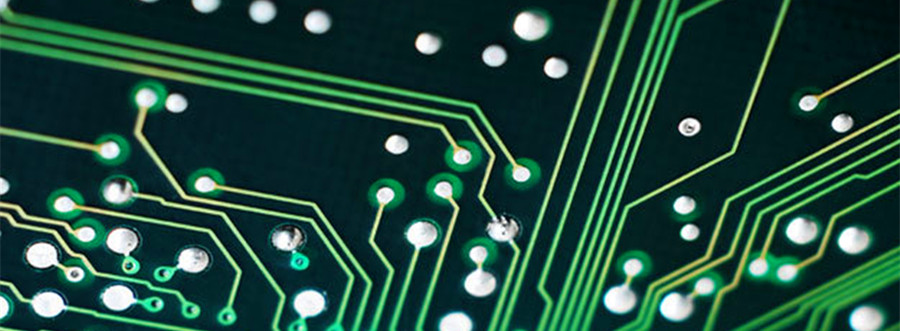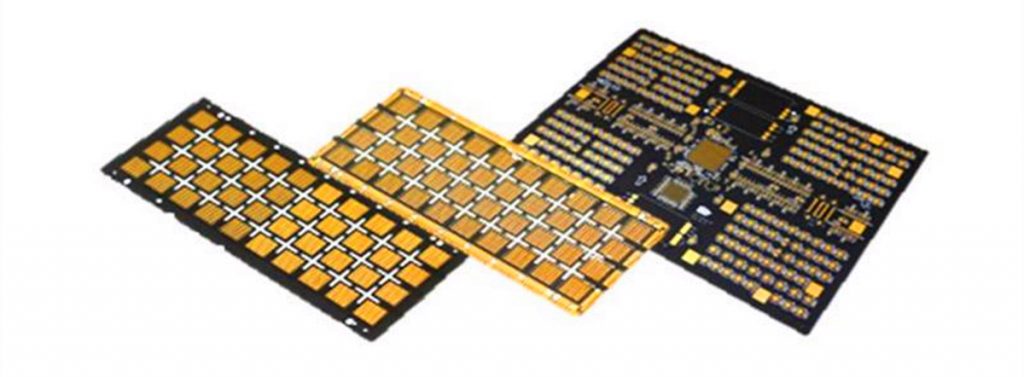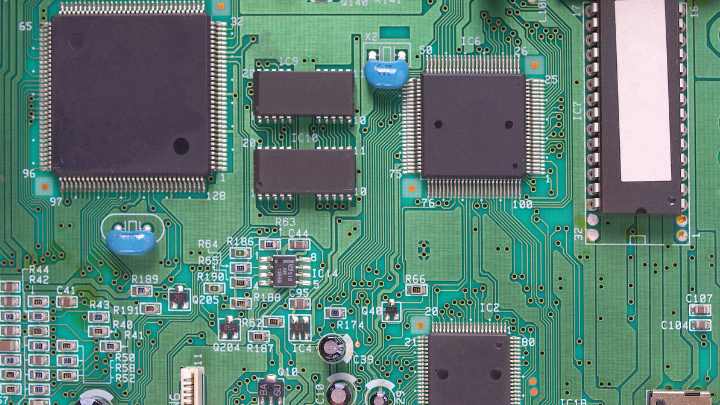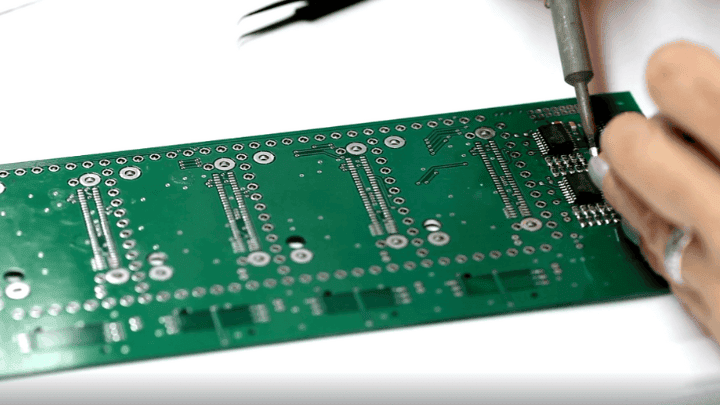Key Factors Affecting the Cost and Quality of Quick Turn PCB Manufacturing
In an era where technological advancements are not just desirable but essential, quick turn PCB manufacturing emerges as a pivotal service in the electronics sector. This process, often overlooked in conventional discussions, represents more than just a rapid production method; it’s a testament to an industry’s ability to adapt swiftly to ever-evolving market demands and technological innovations.
Quick turn PCB manufacturing is not merely about expediently pushing out products. It’s a nuanced dance between speed, cost, and, most critically, quality. In industries like electronics, aerospace, automotive, and telecommunications, where the shelf life of a technology is as short as the innovation that replaces it, quick turn PCBs are the silent enablers. They empower electrical engineers, product designers, and procurement professionals to not just keep pace but often outstrip the fast-moving currents of tech development.
However, the discourse around this topic often gravitates only towards its ability to shorten production times. Rarely is there a deep dive into how this acceleration impacts the cost structure, PCB material selection, or the intricate balance between accelerating processes and maintaining the uncompromised quality of the final product. This article aims to shed light on these less explored facets, offering a unique perspective that caters to the technical acumen and decision-making prowess of our audience.
Our journey through quick turn PCB manufacturing will unravel the intricate layers that define its cost, demystify the techniques ensuring quality under stringent deadlines, and envision the future trajectory of this indispensable sector. In doing so, we aim to provide insights that are seldom considered in mainstream discussions, yet are crucial for anyone vested in the dynamic world of PCB manufacturing.
Section 1: Understanding Quick Turn PCB ManufacturingPCB
The landscape of PCB (Printed Circuit Board) manufacturing has undergone a significant transformation over the years, with quick turn PCB manufacturing emerging as a cornerstone in this evolution. This section delves into the essence of quick turn PCBs, contrasting it with traditional manufacturing methods and highlighting its indispensable role in modern tech industries.
Subsection 1.1: The Need for Speed in PCB Production
In a world where technological innovation happens at breakneck speed, quick turn PCB manufacturing is not just a luxury; it’s a necessity. This need for speed is particularly pronounced in sectors like electronics, aerospace, and automotive, where the lifecycle of a product can be astonishingly short. For these industries, the ability to rapidly iterate designs and test new concepts is not just about staying competitive; it’s about survival.
However, speed in PCB manufacturing is often misconstrued as simply cutting down production times. The reality is more complex. Speed here refers to a holistic process that includes faster design cycles, rapid prototyping, and expedited testing phases. It’s about enabling electrical engineers and designers to swiftly transition from concept to prototype to final product, thus compressing the development timeline without compromising on the intricacies of design and functionality.
Subsection 1.2: Quick Turn vs. Traditional PCB Manufacturing
Traditional PCB manufacturing, while reliable, often falls short in meeting the urgent demands of modern tech industries. The contrast becomes clear when we consider the lead times. Traditional methods can take weeks, if not months, to move from design to production, primarily due to lengthy processes like extensive prototyping and iterative testing.
Quick turn PCB manufacturing, on the other hand, redefines these timelines. It leverages advanced technologies and streamlined processes to dramatically reduce lead times. This acceleration is achieved through various means – from employing sophisticated software for design and simulation to utilizing modern manufacturing techniques like automated assembly lines and advanced printing technologies.
However, this acceleration does not come without challenges. Maintaining quality, ensuring accurate design translation, and managing cost implications are just a few of the hurdles that need to be navigated. It is a complex balance, one that requires not only technological prowess but also a deep understanding of the nuances of PCB design and production.
Quick turn PCB manufacturing represents a paradigm shift in how we approach electronic component production. It’s a shift that acknowledges the fast-paced nature of modern industries and the need for agility in product development. As we move forward, understanding this manufacturing approach becomes pivotal for any player in the tech sector, from engineers to decision-makers.
Section 2: Key Cost Factors in Quick Turn PCB Manufacturing
In the realm of quick turn PCB manufacturing, understanding the key cost factors is crucial for both manufacturers and customers. This section delves into these cost determinants, offering insights that go beyond the typical surface-level analysis.
Subsection 2.1: Material Costs and Selection
- Advanced Materials and Their Pricing: Quick turn PCBs often require advanced materials that offer superior performance and reliability. These materials, such as high-frequency laminates or specialized conductive inks, refined epoxy laminates, materials boasting ultra-low moisture content, laminates enriched with high-frequency ceramic fillings, boasting a UL 94V-0 rating, can significantly impact the overall cost. However, their selection is not just a matter of cost but of meeting the specific performance requirements of a project. For a detailed understanding of how our quick turn PCB manufacturing aligns with cost-effective solutions, explore our comprehensive PCB Cost Comparison
- Economies of Scale in Material Purchase: Bulk purchasing of materials can lead to reduced costs. This is particularly relevant for manufacturers who operate on a large scale, as it allows them to negotiate better prices with suppliers.
- Cost Implications of Material Waste and Efficiency: Efficient material utilization is key in controlling costs. Innovative manufacturing techniques that minimize waste can play a pivotal role in this regard, thus balancing the equation of quality versus cost.
Subsection 2.2: Advanced Manufacturing Techniques and Their Cost Implications
- Automation and Its Impact on Labor Costs: Automation in quick turn PCB manufacturing can lead to significant savings in labor costs. Automated assembly lines, AI-driven quality checks, and robotic soldering are examples of how technology can streamline processes and reduce manual labor, thereby impacting the cost structure.
- Rapid Prototyping and Testing Costs: The ability to quickly prototype and test designs is a hallmark of quick turn PCB manufacturing. However, this expedited process can incur higher costs due to the use of advanced prototyping technologies and expedited testing procedures.
- Investment in Cutting-Edge Technology: The initial investment in state-of-the-art manufacturing equipment can be substantial. However, this cost needs to be amortized over the lifespan of the equipment, offering long-term cost benefits through increased efficiency and reduced production times.
Subsection 2.3: Volume and Scale Considerations
- Cost Variations Based on Order Volume: The cost per unit in quick turn PCB manufacturing can vary significantly based on the order volume. Larger orders typically benefit from economies of scale, reducing the cost per unit.
- Customization and Its Cost Implications: Customized PCB designs, which are often required in quick turn manufacturing, can add to the cost. The complexity of the design, the uniqueness of the components, and the need for specialized assembly processes are factors that need to be considered.
- Scale of Operations and Overhead Costs: The scale at which a manufacturer operates can influence the overall cost. Larger operations with more overhead costs might need to price their products higher, whereas smaller, more agile manufacturers could offer more competitive pricing.
Understanding these key cost factors in quick turn PCB manufacturing is essential for making informed decisions. It’s not just about finding the lowest price but about understanding the value proposition behind the cost. This section aims to provide deeper insights into the cost structure of quick turn PCB manufacturing, highlighting aspects that are often overlooked yet crucial for a comprehensive understanding of this field.
Section 3: Balancing Cost and Quality
The intersection of cost and quality in quick turn PCB manufacturing is a delicate balance, pivotal to both manufacturers and customers. In this section, we explore innovative approaches and strategies that address this dual imperative, often neglected in mainstream discussions.
Subsection 3.1: Cost-Efficient Design without Compromising Quality
- Innovative Design Approaches for Cost Efficiency: At the heart of cost-effective PCB manufacturing lies innovative design. Utilizing design for manufacturability (DFM) principles can lead to significant cost savings. This involves optimizing the PCB layout for easier and more efficient manufacturing, reducing material waste, and simplifying the assembly process.
- Balancing Component Selection and Performance: A key aspect of maintaining PCB quality control while controlling PCB manuafcturing costs is the judicious selection of components. Striking the right balance between using cost-effective yet reliable components is crucial. This involves a deep understanding of the trade-offs between component costs and their performance characteristics.
Subsection 3.2: The Role of Automation in Cost Reduction
- Leveraging Automation for Consistent Quality and Lower Costs: The advent of automation in PCB manufacturing has opened new avenues for balancing cost and quality. Automated processes not only reduce the likelihood of human error but also ensure consistent quality. Simultaneously, they bring down labor costs and improve production efficiency, translating to lower costs for the end product.
- Integrating Smart Technologies for Proactive Quality Control: The integration of smart technologies like AI and machine learning in quality control processes can preemptively identify potential defects and inefficiencies. This proactive approach to quality assurance helps in maintaining high standards without incurring the high costs usually associated with rigorous manual inspection processes.
In this complex yet fascinating landscape of quick turn PCB manufacturing, understanding how to effectively balance cost and quality is not just a matter of technical expertise. It requires a holistic approach that encompasses innovative design, strategic component selection, and leveraging modern technologies. This section aims to illuminate these often-overlooked aspects, providing valuable insights for professionals navigating this dynamic industry.
Section 4: Ensuring Quality Under Tight Deadlines
In the high-stakes world of quick turn PCB manufacturing, ensuring quality despite tight deadlines is a paramount concern. This section delves into the strategies and methodologies employed to uphold quality standards, even under the pressure of accelerated production schedules.
Subsection 4.1: Quality Control Practices in Quick Turn PCB Manufacturing
- Advanced Quality Control Systems: The use of sophisticated quality control systems is crucial in quick turn PCB manufacturing. These systems, often AI-powered, can detect even the minutest flaws, ensuring that the rapid production pace does not compromise the integrity of the PCBs.
- Automated Optical Inspection (AOI): This technique uses high-resolution cameras to scan the PCBs for defects like short circuits, missing components, or improper soldering.
- X-Ray Inspection: For more complex PCBs, X-ray inspection is employed to examine inner layers and hidden joints, ensuring that even areas not visible to the naked eye meet quality standards.
- Streamlined Testing Protocols: Efficient testing protocols are key in maintaining quality. By employing streamlined testing methods, manufacturers can quickly identify and rectify any issues without significantly delaying the production process.
- In-Circuit Testing (ICT): This method tests the PCBs at the circuit level, checking for shorts, opens, resistance, capacitance, and other electrical parameters.
- Functional Testing: This simulates the operating environment of the PCB, ensuring that it performs as expected in real-world conditions.
Subsection 4.2: Case Studies: Success Stories of Quality Assurance
- Real-World Examples of Quality Under Pressure: Presenting case studies of successful quick turn PCB projects provides tangible evidence of the effectiveness of these quality control practices.
- Case Study 1: An instance where a complex PCB design was turned around in a record time while maintaining high-quality standards, demonstrating the efficacy of advanced inspection techniques and testing protocols.
- Case Study 2: A scenario where innovative material selection and design optimization under a tight deadline led to a superior quality PCB, showcasing the importance of strategic planning in quick turn PCB manufacturing.
In the pursuit of speed, the quality of PCBs cannot be an afterthought. This section emphasizes the importance of advanced quality control systems, efficient testing protocols, and real-world examples to demonstrate how quality is maintained under tight deadlines. It’s a testament to the industry’s commitment to delivering excellence, regardless of the time constraints.
Section 5: The Future of Quick Turn PCB Manufacturing
As we look towards the future, quick turn PCB manufacturing is poised to undergo transformative changes, driven by emerging trends and technological innovations. This section provides a forward-looking perspective on what lies ahead for this dynamic industry.
Subsection 5.1: Emerging Trends and Technologies
- Advancements in Materials Technology: Future PCBs are likely to feature new, innovative materials that offer enhanced performance, such as greater heat resistance or improved electrical conductivity. The exploration and adoption of these materials will be key to advancing the capabilities of quick turn PCBs.
- Nano-materials: The use of nano-materials in PCBs could revolutionize their performance, offering unprecedented electrical, thermal, and mechanical properties.
- Environmentally Friendly Materials: As sustainability becomes increasingly important, the development and incorporation of eco-friendly materials in PCB manufacturing will be a significant trend.
- Integration of AI and Machine Learning: Artificial intelligence and machine learning are set to play a pivotal role in optimizing manufacturing processes, from design to production.
- Predictive Maintenance: Using AI to predict equipment maintenance needs, reducing downtime and improving production efficiency.
- Design Optimization: Machine learning algorithms can assist in creating more efficient PCB designs, reducing material usage and production time.
Subsection 5.2: Preparing for Tomorrow’s Manufacturing Challenges
- Embracing Digital Transformation: Companies will need to embrace digital transformation to stay competitive. This includes adopting digital tools for design, simulation, and production management.
- Cloud-Based Design and Collaboration Tools: Leveraging cloud technology for remote collaboration and design efficiency.
- Digital Twins: Utilizing digital twins for simulations and testing, reducing the need for physical prototypes.
- Investing in Skilled Workforce and Continuous Learning: As technologies evolve, the need for a skilled workforce adept in these new technologies becomes critical.
- Specialized Training Programs: Developing training programs focused on emerging technologies in PCB manufacturing.
- Partnerships with Educational Institutions: Collaborating with universities and technical institutes to prepare the next generation of PCB manufacturing professionals.
Conclusion
As we’ve navigated through the intricate world of quick turn PCB manufacturing, it’s evident that this field is not just about rapid production; it’s about mastering a fine balance between speed, cost, and quality. In an industry where technological advancements are relentless, the ability to adapt and innovate is not just an advantage – it’s a necessity.
The insights presented in this article are designed to resonate with the professionals at the forefront of electronics, aerospace, automotive, and telecommunications. Your expertise and decision-making capabilities are the driving forces behind the continued evolution of quick turn PCB manufacturing. As you face the challenges of developing cutting-edge technology under tight deadlines, remember that balancing cost and quality is a dynamic process, one that requires continuous learning and adaptation.
For those eager to delve deeper into the world of quick turn PCB manufacturing or looking to collaborate on future projects, we invite you to reach out. Your inquiries and ideas are the catalysts for innovation in this exciting industry. Together, let’s push the boundaries of what’s possible in PCB manufacturing.





